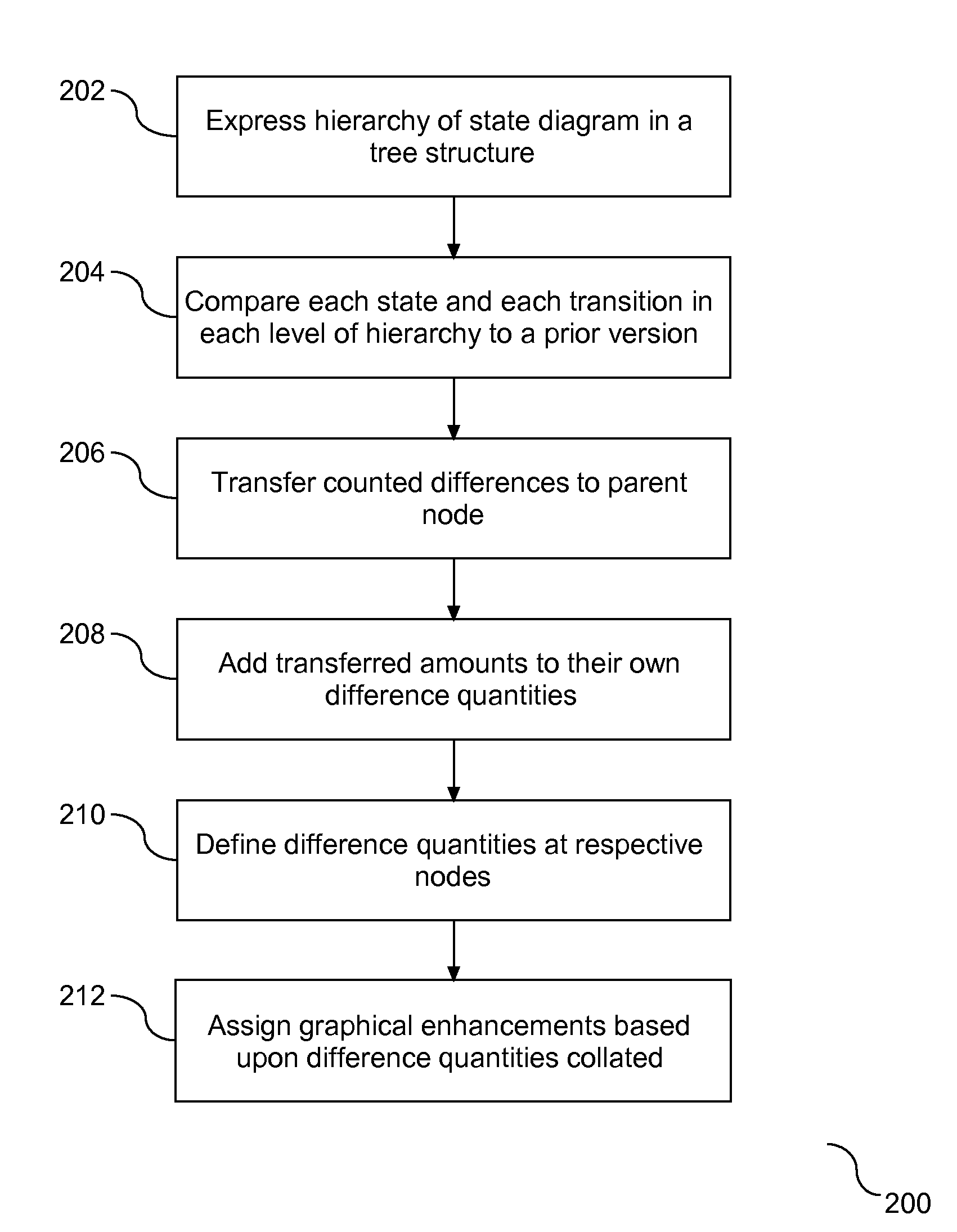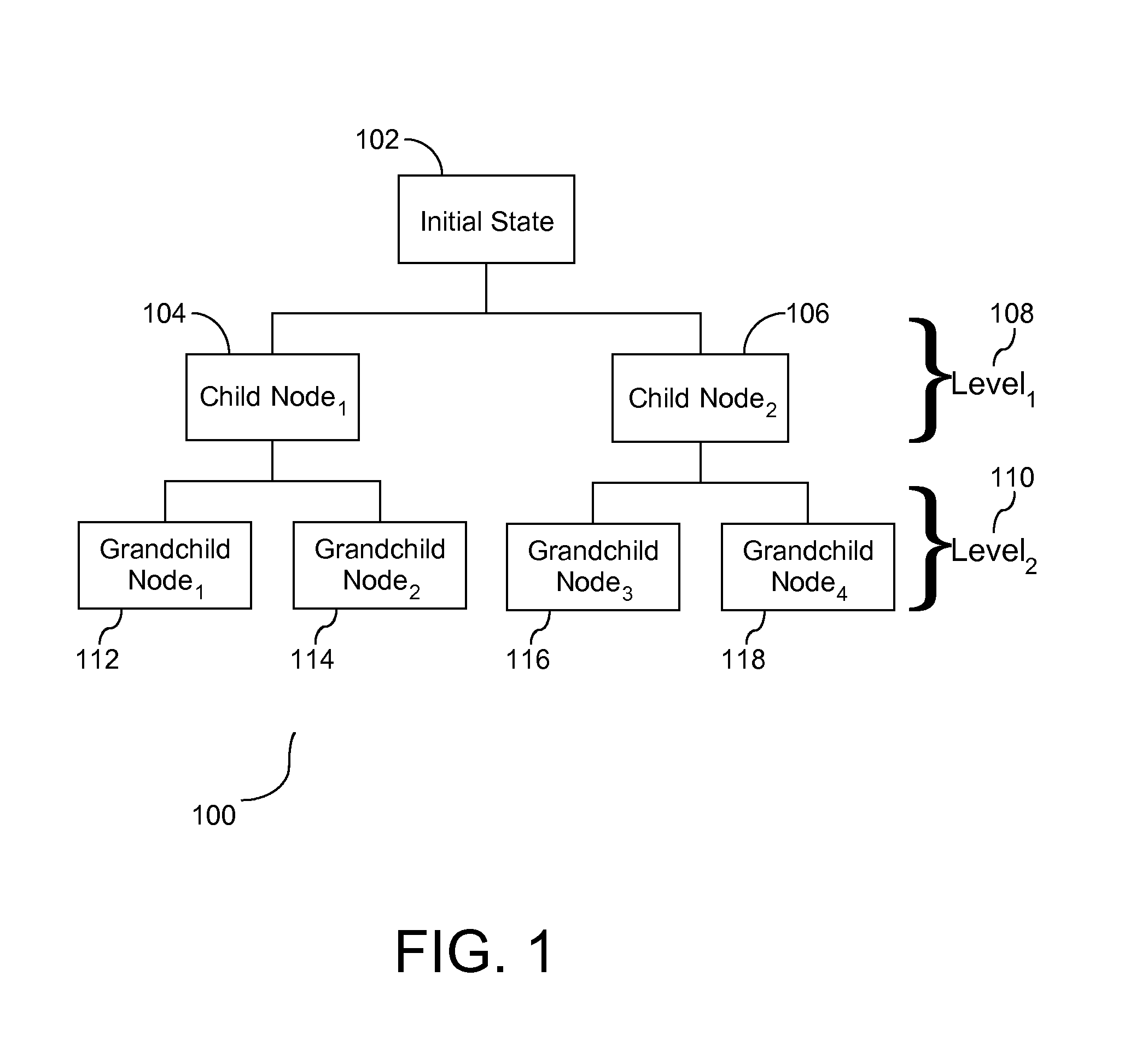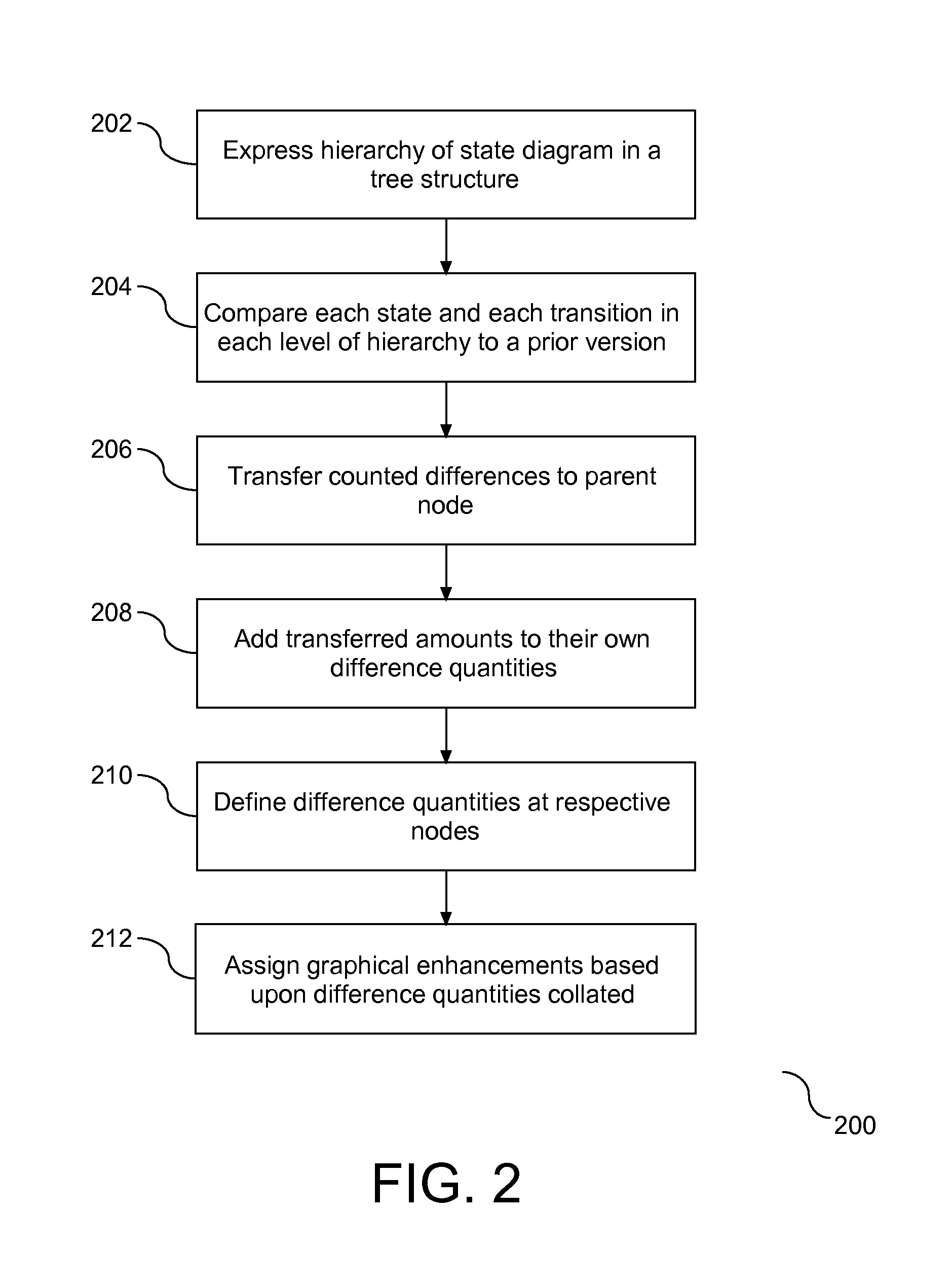Method of Visualizing Modifications of a Hierarchical State Diagram
a state diagram and hierarchical representation technology, applied in the field of hierarchical representation of state diagrams, can solve the problems of difficulty in understanding the difference between a second version diagram and the original diagram, design does not capture the commonality, and the difficulty of understanding the modification of the model increases with complexity
- Summary
- Abstract
- Description
- Claims
- Application Information
AI Technical Summary
Problems solved by technology
Method used
Image
Examples
Embodiment Construction
Overview
[0021]State diagrams have basic elements that include a rounded box representing the state of the object and arrows indicating the transition to the next state. An activity section of a state depicts what activities the object will be doing while it is in that state. All state diagrams begin with an initial state of the object. This is the state of the object when it is created. After the initial state, the object begins changing states. A hierarchical state diagram is represented in a tree structure with a parent level and one or more child levels. In a hierarchical state diagrams, the initial state is the parent node of a tree structure and the child nodes represent secondary states, i.e. a transition state or a final state. Conditions based on activities determine the next state to be represented in the diagram, i.e. the state the object transitions to. It is accepted in the art that a modeled state diagram may be modified over time. The modifications are accumulated at e...
PUM
 Login to View More
Login to View More Abstract
Description
Claims
Application Information
 Login to View More
Login to View More - R&D
- Intellectual Property
- Life Sciences
- Materials
- Tech Scout
- Unparalleled Data Quality
- Higher Quality Content
- 60% Fewer Hallucinations
Browse by: Latest US Patents, China's latest patents, Technical Efficacy Thesaurus, Application Domain, Technology Topic, Popular Technical Reports.
© 2025 PatSnap. All rights reserved.Legal|Privacy policy|Modern Slavery Act Transparency Statement|Sitemap|About US| Contact US: help@patsnap.com



